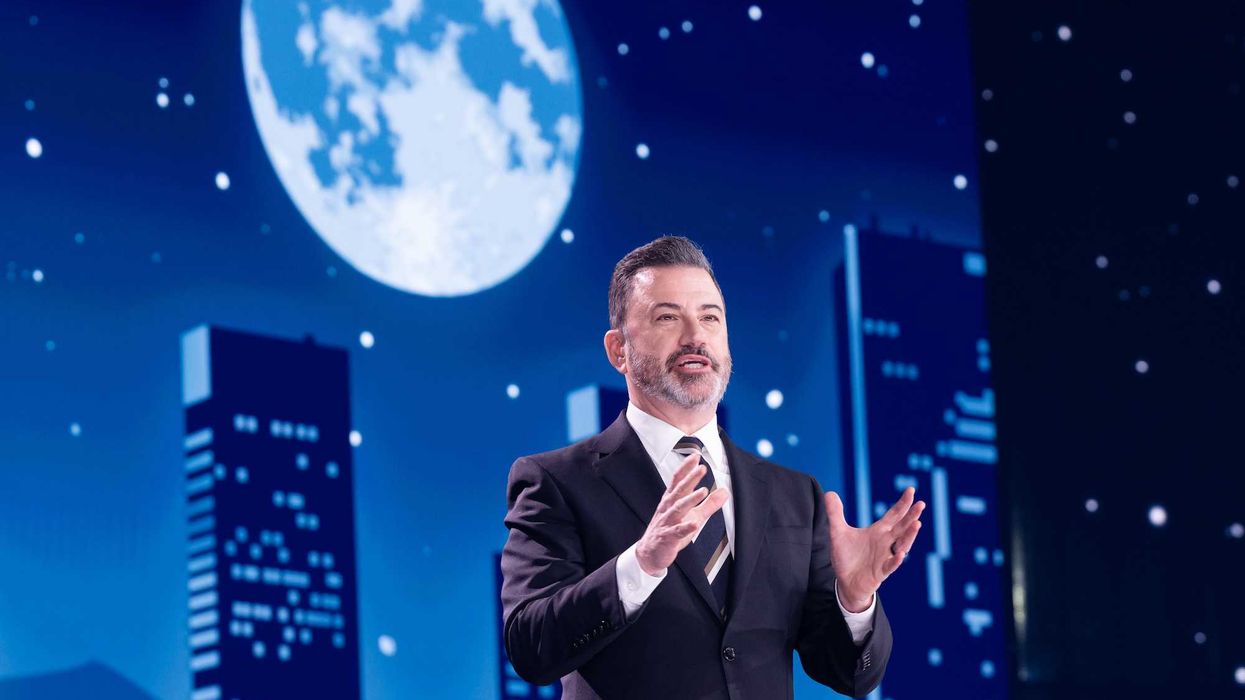
© 2025 Blaze Media LLC. All rights reserved.
First in Space Exploration: ESA Successfully Lands Probe on Comet But One Failed System Might Cause Serious Problems
November 12, 2014
"It's on its own now."
(TheBlaze/AP) -- The European Space Agency "caught" a comet with a landing probe for the first time in human space exploration, but the harpoons that are designed to hold the probe in place are malfunctioning.
ESA announced early Wednesday that the 220-pound lander's active descent system, which uses thrust to prevent the craft from bouncing off the comet's surface, could not be activated. Instead, the washing machine-sized lander drifted down to the comet and latched on using harpoons and screws, and at first the operations team confirmed that the Philae probe had fired the harpoons.
But just minutes after the successful landing, the operations team determined the harpoons were not firing correctly.
The unmanned Rosetta probe detached from its satellite, and after a seven-hour journey toward the surface of comet 67P/Churyumov-Gerasimenko it successfully touched down just after 11 a.m. EST. After the touchdown, ESA Director General J-J. Dorian said, "We are the first to have done that, and that will stay forever!"
Rosetta and Philae, if it can remain in place on the comet, will accompany the comet as it hurtles toward the sun and becomes increasingly active as it heats up. Using 21 different instruments, they will collect data that scientists hope will help explain the origins of comets and other celestial bodies. The European Space Agency's $1.6 billion mission launched in 2004 so far is a complete success, despite the issues with the landing
The audacious landing is the climax of a decade-long mission to study the 2.5-mile wide comet, which is traveling at 41,000 mph. It is also the end of Rosetta's 4 billion-mile journey carrying its sidekick lander Philae to the rendezvous point in deep space.
The comet-catching mission was described by ESA scientists as “the sexiest, most fantastic mission ever,” and the complex math involved in the operation is stunning: The scientists charted the satellite's course to complete a series of sling-shot maneuvers to gain enough speed to chase down the comet on its orbit around the sun, including three loops around Earth and one around Mars.
During the descent, scientists were powerless to do anything but watch, because the vast distance to Earth -- 311 million miles -- makes it impossible to send instructions in real time. It takes more than 28 minutes for a command to reach Rosetta.
 ESA's comet-chasing Rosetta mission spent much of the second half of October orbiting Comet 67P/Churyumov–Gerasimenko at less than 6 miles from its surface. This selection of previously unpublished "beauty shots," taken by Rosetta’s navigation camera, presents the varied and dramatic terrain of this mysterious world from this close orbit phase of the mission. (Image and caption: ESA)
ESA's comet-chasing Rosetta mission spent much of the second half of October orbiting Comet 67P/Churyumov–Gerasimenko at less than 6 miles from its surface. This selection of previously unpublished "beauty shots," taken by Rosetta’s navigation camera, presents the varied and dramatic terrain of this mysterious world from this close orbit phase of the mission. (Image and caption: ESA)
The European Rosetta mission is different from NASA’s Deep Impact spacecraft, which fired a projectile into a comet in 2005 to study the resulting plume of matter. NASA also landed a probe on an asteroid in 2001, but comets are much more volatile places because they constantly release dust and gas that can harm a spacecraft.
The Rosetta probe and the comet, now commonly referred to as 67P, have caused a stir on Twitter, from scientists and space fans alike.
If you missed the landing, you can still check out the five-minute film "Ambition" created as a futuristic description of the monumental landing:
--
This story has been updated.
Follow Elizabeth Kreft (@elizabethakreft) on Twitter
Want to leave a tip?
We answer to you. Help keep our content free of advertisers and big tech censorship by leaving a tip today.
Want to join the conversation?
Already a subscriber?
more stories
Sign up for the Blaze newsletter
By signing up, you agree to our Privacy Policy and Terms of Use, and agree to receive content that may sometimes include advertisements. You may opt out at any time.
Related Content
© 2025 Blaze Media LLC. All rights reserved.
Get the stories that matter most delivered directly to your inbox.
By signing up, you agree to our Privacy Policy and Terms of Use, and agree to receive content that may sometimes include advertisements. You may opt out at any time.






